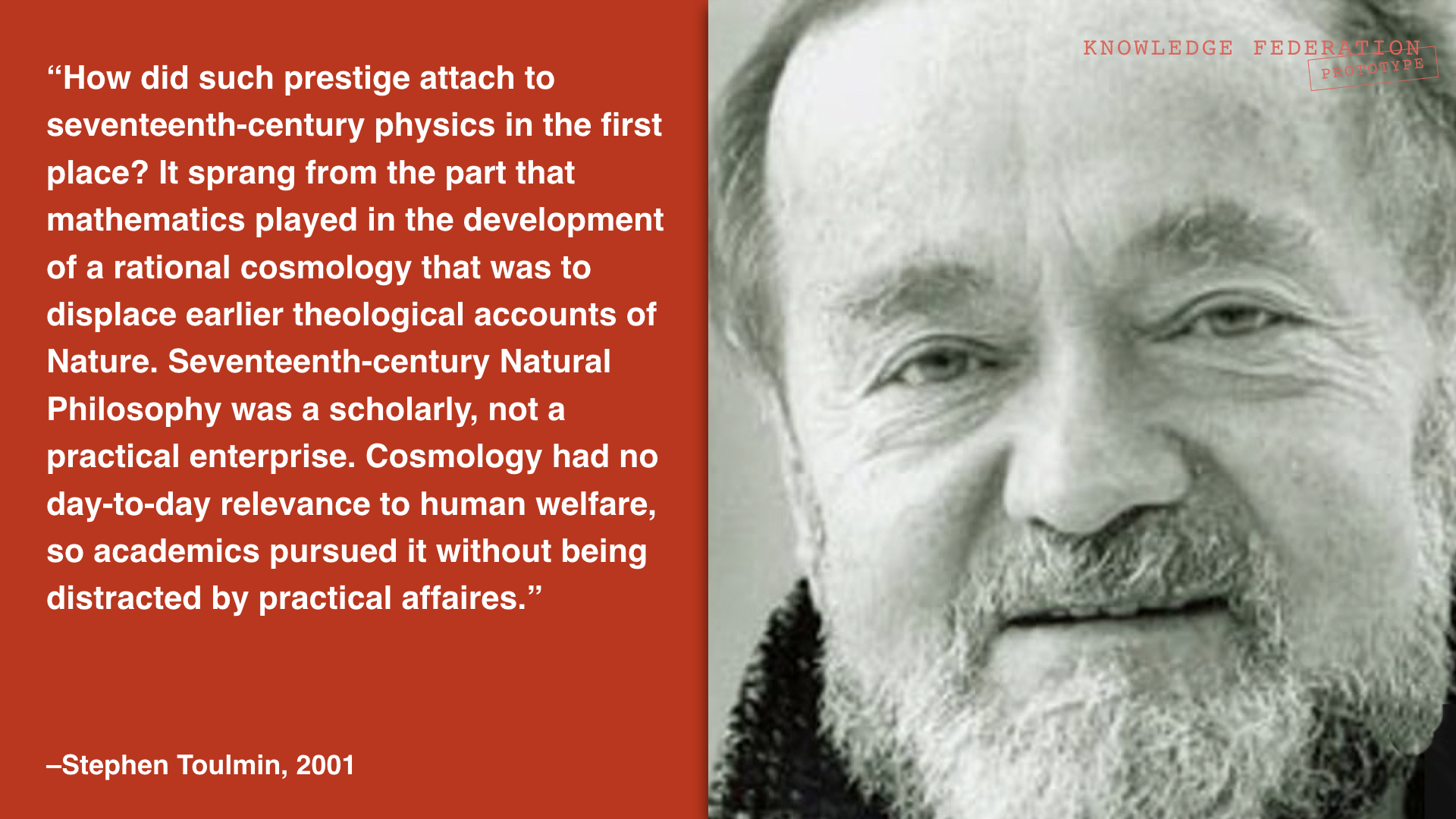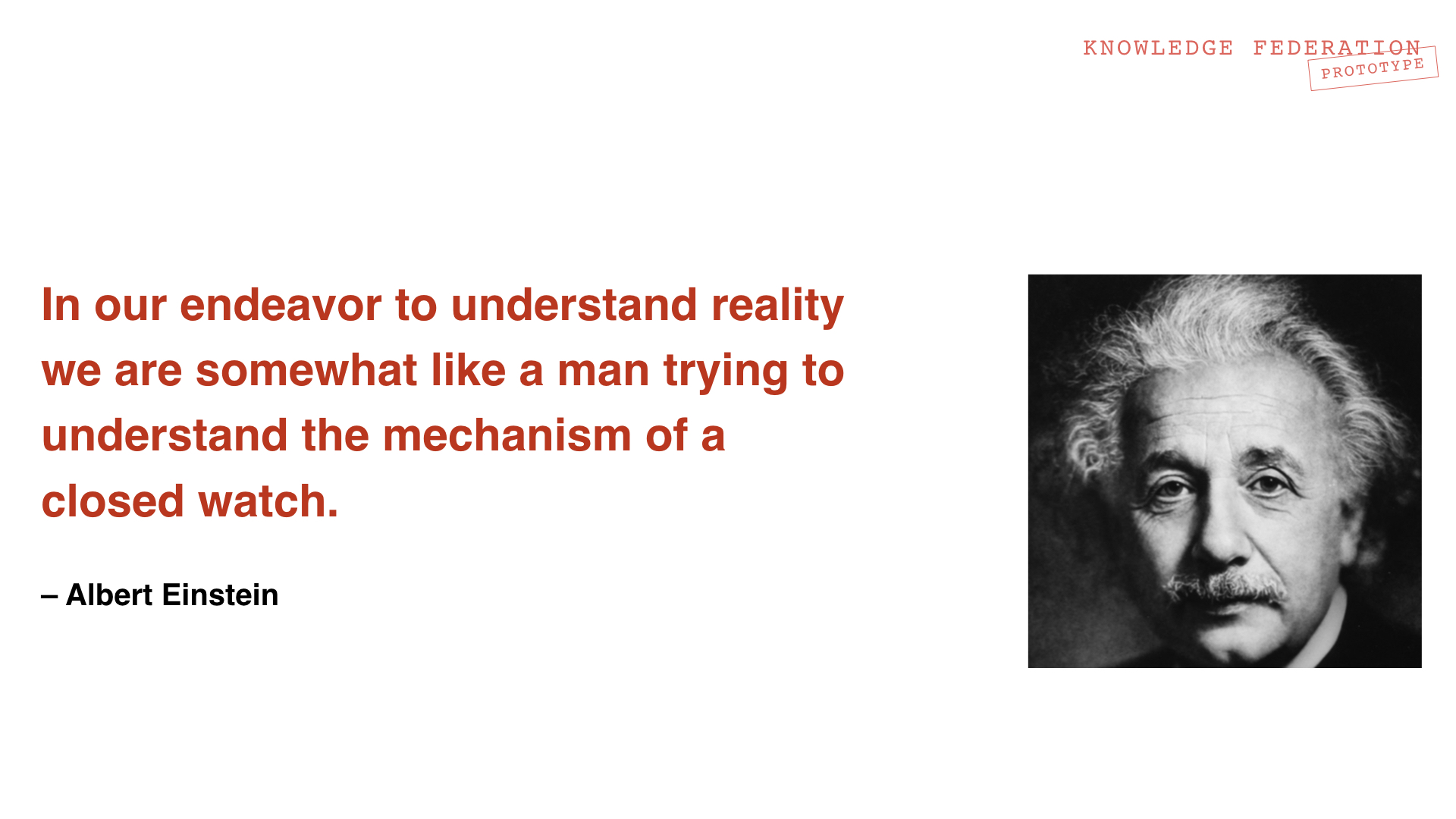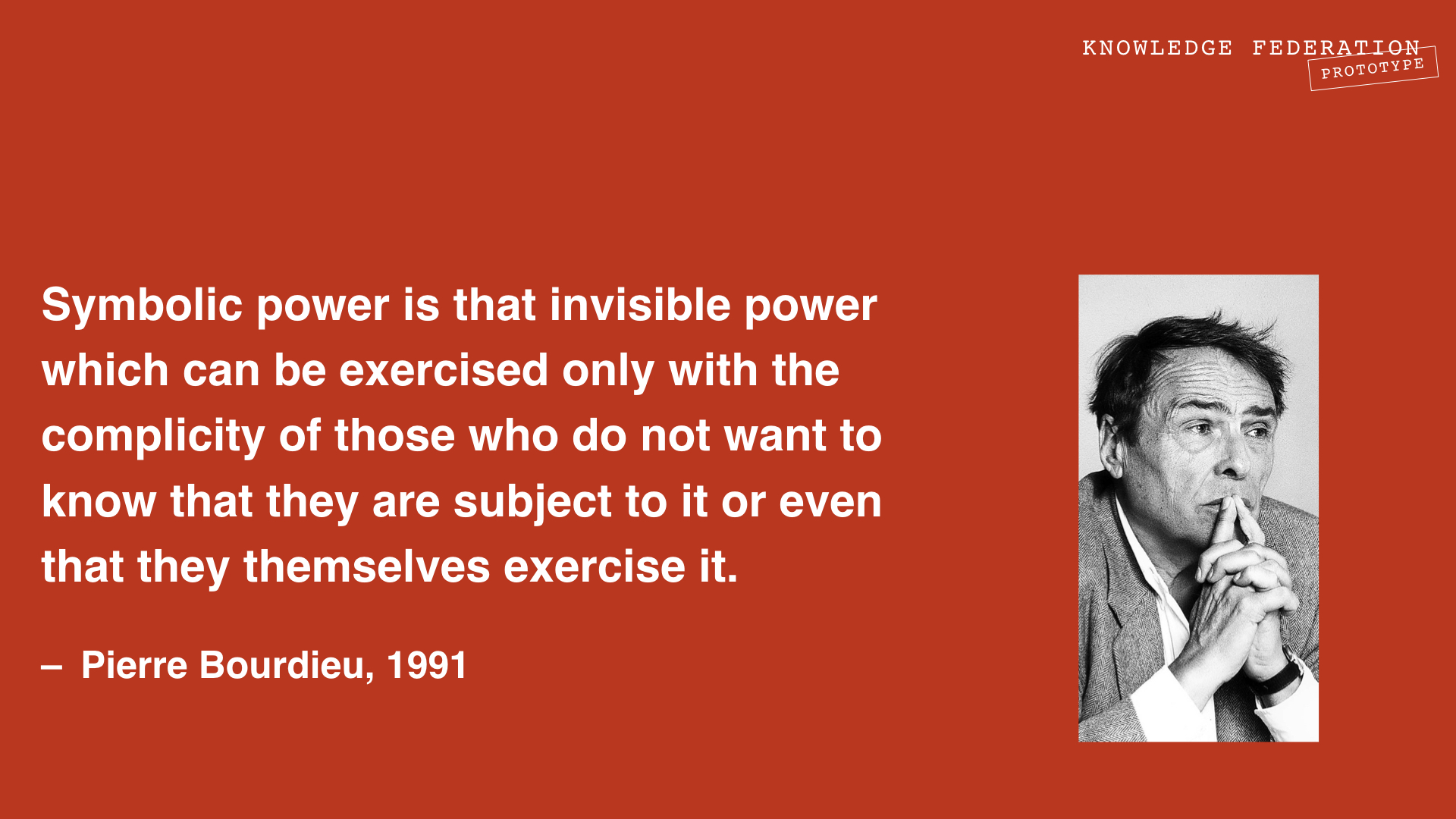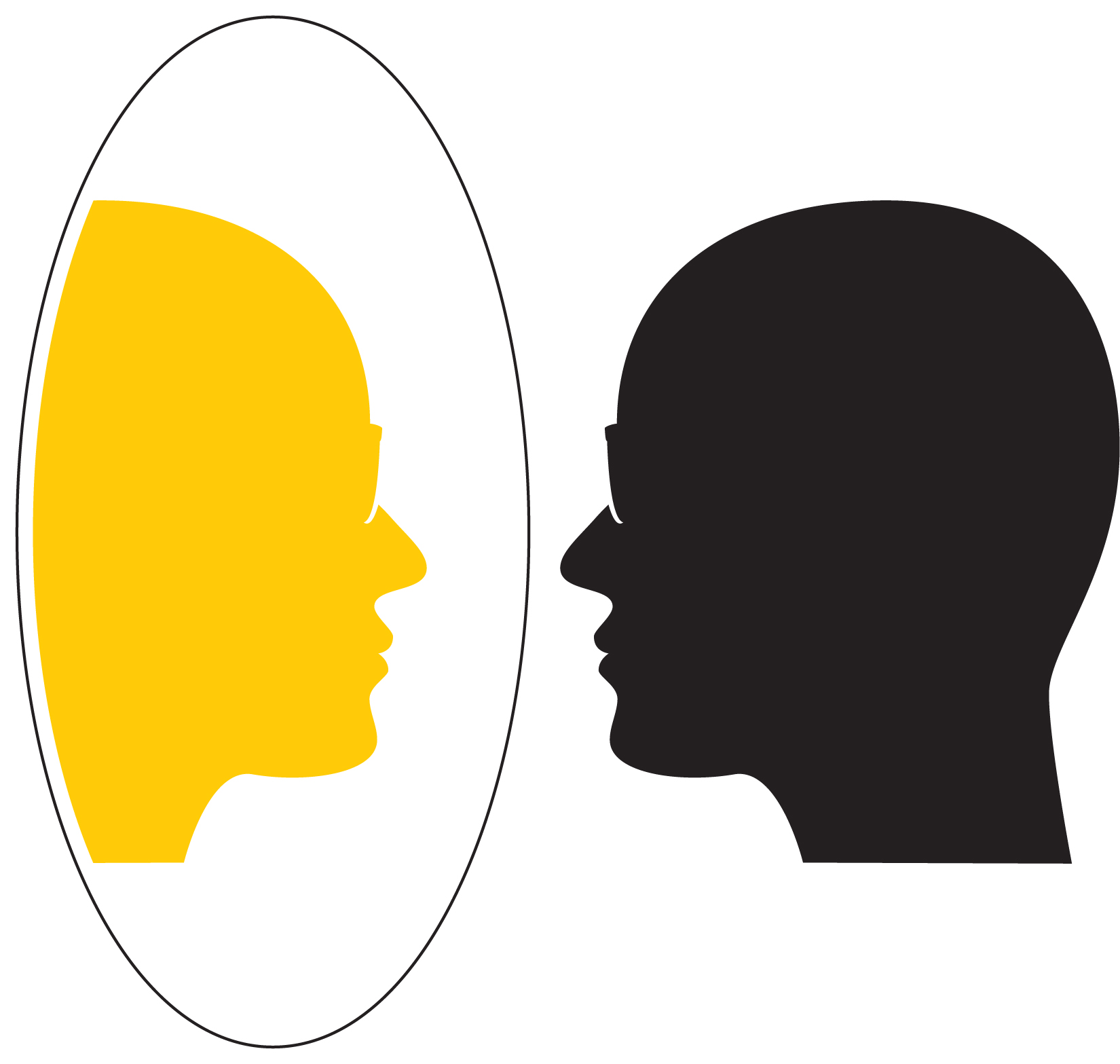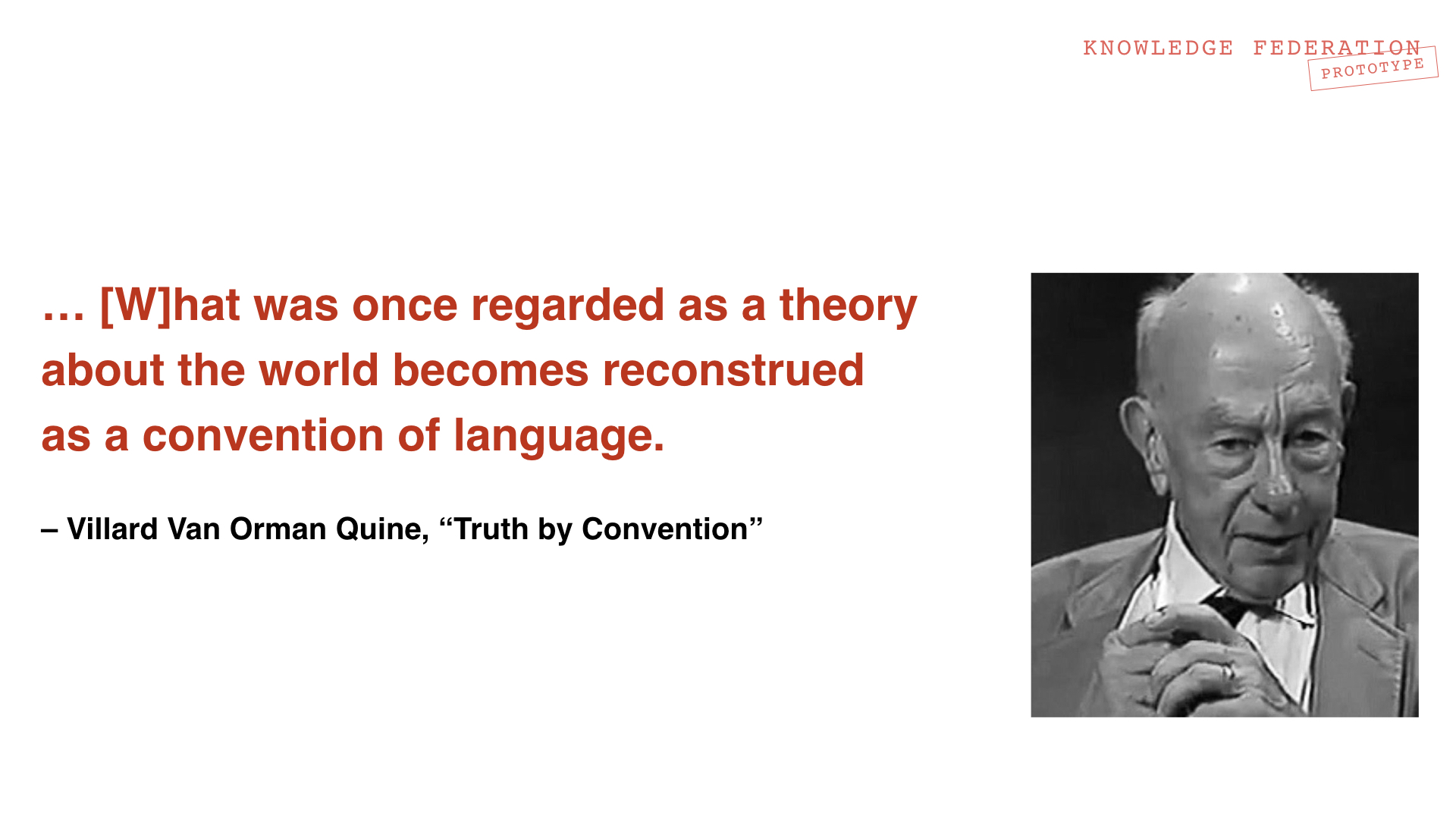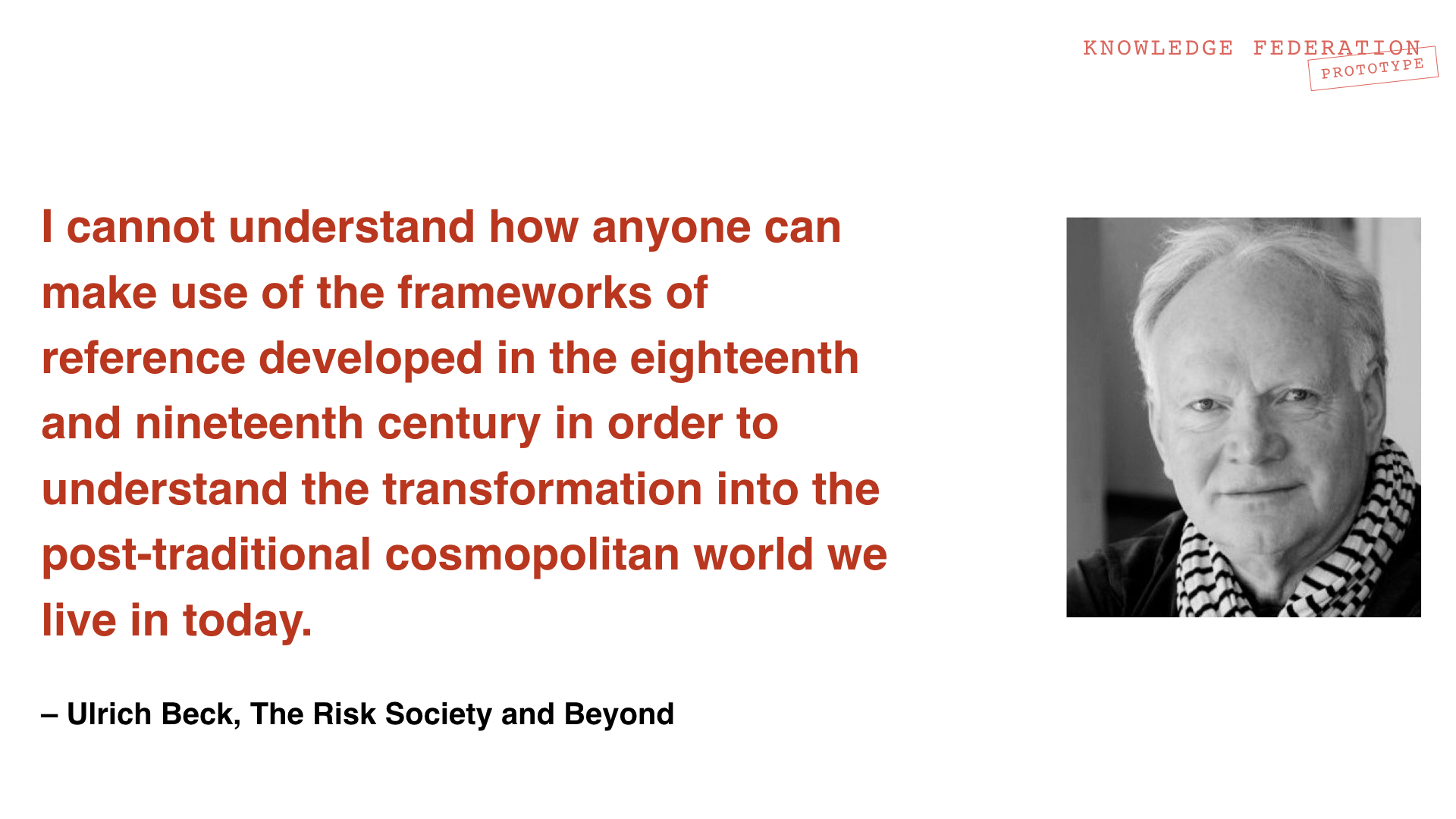Holotopia
Contents
HOLOTOPIA
An Actionable Strategy
Imagine...
You are about to board a bus for a long night ride, when you notice the flickering streaks of light emanating from two wax candles, placed where the headlights of the bus are expected to be. Candles? As headlights?
Of course, the idea of candles as headlights is absurd. So why propose it?
Because on a much larger scale this absurdity has become reality.
The Modernity ideogram renders the essence of our contemporary situation by depicting our society as an accelerating bus without a steering wheel, and the way we look at the world, try to comprehend and handle it as guided by a pair of candle headlights.
Scope
"Act like as if you loved your children above all else",Greta Thunberg, representing her generation, told the political leaders at Davos. Of course the political leaders love their children—don't we all? But what Greta was asking for was to 'hit the brakes'; and when our 'bus' is inspected, it becomes clear that its 'brakes' too are dysfunctional. Changing the system, on the other hand, is well beyond what the politicians have the power to do, or even conceive of.
The COVID-19 crisis too is demanding systemic change.
So who, what institution or system, will lead us in "changing course" by changing the systems in which we live and work—our collective mind to begin with?
Both Jantsch and Engelbart believed that "the university" would have to be the answer; and they made their appeals accordingly. But the universities ignored them—as they ignored Bush and Wiener before them, and others who followed.
Why?
It is tempting to conclude that the university institution too followed the general trend, and organized itself as a power structure. But to see solutions, we need to look at deeper causes.
We readily find them in the way in which the university institution developed. The academic tradition did not originate as a way to pursue practical knowledge, but to freely pursue knowledge for its own sake.
And as we pointed out in the opening paragraphs of this website, by highlighting the iconic image of Galilei in house arrest,
it was this free pursuit of knowledge that led to the last "great cultural revival".
The ethos of the pursuit of knowledge for its own sake is deeply woven into the academic system and tradition—and for good reasons, as we have just seen. At the universities, we consider ourselves as the heirs and the custodians of a tradition that has historically led to some of the most spectacular evolutionary leaps in human history. Naturally, we remain faithful to this tradition; and we do that by meticulously following the interests and the processes of mathematics, physics, philosophy, biology, sociology and other traditional disciplines.
Can the academic tradition once again ignite a cultural revival?
This would, of course, be a natural and easy solution—considering the amount of talent, knowledge and social esteem the 'academic standing army' now owns, and its sheer size.
The key to the answer, the pivotal point of change or "the systemic leverage point" is, as we shall see, the academic self-perception—and that's what we will focus on.
Diagnosis
Two substantial changes developed during the last century, in the very determinants that shaped the academic tradition. One of them was pragmatic, the other one fundamental.
The pragmatic change is in the role that the academic tradition has in our society.
As Stephen Toulmin pointed out in "Return to Reason", from which the above excerpt was quoted, the academic system took shape in a culture where the Bible and the tradition had the prerogative to tell the people what to believe, what values to serve and how to behave. As the image of Galilei in house arrest might suggest, they held onto this prerogative most firmly!
It was by a historical accident that the academic tradition assumed a much larger roles in our society than it was prepared to perform.
The academic tradition acquired its new role, of curating the very relationship we have with information and with knowledge, and the power that accompanies it, by first discrediting and then replacing the Church and the tradition.
The fundamental change was in the way in which we conceive of information and knowledge, and of the very meaning of "truth" and "reality".
In the academic tradition and our society at large, it was generally considered as self-evident that "truth" means "correspondence with reality". And that the purpose of information is to give us real or true knowledge—of reality as it truly is.
It may take a moment of reflection to see how much this assumption now marks "the relationship we have with information"—in all its various manifestations.
This assumption, however, can no longer be rationally or academically maintained.
It is simply impossible to open up the 'mechanism of nature', and verify that our ideas and models correspond to the real thing!
How, then, did our "reality picture" come about?
Reality, the 20th century's scientists and philosophers found out, is not something we discover; it is something we construct.
In "Social Construction of Reality", Berger and Luckmann left us an analysis of the social process by which the reality is constructed. They pointed to the role that "universal theories" (which determine the relationship we have with information) play in maintaining a social and political status quo. An example is the Biblical worldview of Galilei's persecutors—but not, of course, the only one.
Pierre Bourdieu left us a thorough explanation of the interplay between reality construction and subtle "symbolic power", by which cultural and social roles, and our very preferences and behaviors, are developed and maintained—without anyone's conscious intention, or even awareness. In it, the experience that our socialized reality is the objectively given reality (which Bourdieu called "doxa"), serves as an all-powerful instrument of socialization, giving the binding strength to the very 'glue' that holds us together in a certain order of things—or in power structure, as we called it.
This diagnosis suggests itself.
The Enlightenment did not liberate us from power-related reality construction, as it is believed.
Power, and socialization, only changed hands—from the kings and the clergy, to the corporations and the media.
Ironically, the traditional and carefully cultivated academic self-identity—of an "objective" observer of reality—keeps the academia, and information and knowledge at large, on the 'back seat'; without impact.
Remedy
Before we outline the most fundamental or academic part of our proposal, let us first make sure that its practical meaning is made clear.
On the one side, we ave the humanity's urgent and complex issues, and its general need for creative solutions and for change. On the other side we have a vast international army of academic professionals, where our work and interests are confined to traditional disciplinary pursuits—that being, we tend to assume, what the academic rigor, and hence also academic work, requires.
Can we liberate ourselves from disciplinary confinement?
Can we empower ourselves to use our creativity freely yet responsibly—without sacrificing rigor?
In the spirit of the holoscope, we introduce an answer by a metaphorical image, the Mirror ideogram. As the ideograms tend to, the Mirror ideogram too renders the essence of a situation, in a way that points to a way in which the situation may need to be handled—and to some subtler points as well.
The point here is that the free pursuit of knowledge for its own sake—the pursuit that distinguishes the academic tradition—has brought us to a certain singular situation—or metaphorically, in front of the mirror. The mirror is inviting us, and indeed compelling us to interrupt what we are doing, and once again self-reflect—about the nature, purpose and limits of our knowledge; just as Socrates was inviting his contemporaries at the point of the Academia's inception, many centuries ago.
When we look at the mirror, we see ourselves in the world that surrounds us. We are then impelled to acknowledge that we are not above the world, looking at it "objectively".
Two consequences are intended.
The first consequence is the ending of reification. We realize, by self-reflecting in front of the mirror, that the ways in which we look at the world, and the systems that organize us together, are no "objectively" given and only "discovered". We, humans, created them.
The second consequence is the beginning of accountability. The world we see ourselves in is a world that needs new ideas, new ways of thinking, and of being. It's a world in dire need for creative yet structured and accountable change. We see the key role that information and knowledge have in that world, and that situation.
We see ourselves holding the key.
We propose that this situation can and needs to be resolved—in an academically rigorous and socially accountable way—by, metaphorically speaking walking right through the mirror. And to begin a completely new academic and social reality on the other side.
Philosophically, and practically, this seemingly impossible or 'magical' feat, to walk through the mirror, can be done in only two steps.
The first is to use what philosopher Villard Van Orman Quine called "truth by convention"—which we adapted as one of our keywords.
Quine opened "Truth by Convention" by observing:
"The less a science has advanced, the more its terminology tends to rest on an uncritical assumption of mutual understanding. With increase of rigor this basis is replaced piecemeal by the introduction of definitions. The interrelationships recruited for these definitions gain the status of analytic principles; what was once regarded as a theory about the world becomes reconstrued as a convention of language. Thus it is that some flow from the theoretical to the conventional is an adjunct of progress in the logical foundations of any science."
But if truth by convention has been the way in the sciences repair their logical foundations—why not use it to update the logical foundations of our knowledge work at large?
As we are using this keyword, the truth by convention is the kind of truth that is common in mathematics: "Let X be Y. Then..." and the argument follows. Insisting that x "really is" y is obviously meaningless. A convention is valid only within a given context—which may be an article, or a theory, or a methodology.
Truth by convention offers us an academically rigorous liberation from reification.
The second step is to use truth by convention to define an epistemology
We defined design epistemology by turning the core of our proposal (to change the relationship we have with information—by considering it a human-made thing, and adapting information and the way we handle it to the functions that need to be served) into a convention.
In the "Design Epistemology" research article (published in the special issue of the Information Journal titled "Information: Its Different Modes and Its Relation to Meaning", edited by Robert Logan) where we articulated this proposal, we made it clear that the design epistemology is only one of the many ways to manifest this approach. We drafted a parallel between the modernization of science that can result in this way and the emergence of modern art: By defining an epistemology and a methodology by convention, we can do in the sciences as the artists did—when they liberated themselves from the demand to mirror reality, by using the techniques of Old Masters.
As the artists did—we can become creative in the very way in which we practice our profession.
To complete this proposal—to the academia to 'step through the mirror' and to guide our society to a new reality—we developed the two prototypes—of the holoscope (to model the academic reality on the other side) and of the holotopia (to model the social reality).
We bring these lofty and "up in the air" possibilities down to earth, by discussing one of the more immediately practical consequences of the proposed course of action.
Ulrich Beck continued the above observation:
"Max Weber's 'iron cage' – in which he thought humanity was condemned to live for the foreseeable future – is for me the prison of categories and basic assumptions of classical social, cultural and political sciences."
Reification is what keeps us in 'iron cage'
Truth by convention is an academic key by which we can liberate ourselves.
The keywords we've been using all along are all defined by convention.
The discussions of two examples—of design and implicit information—which we offer separately, will illustrate subtle yet central advantages this approach offers. Each of those keywords has been proposed to corresponding academic communities, and well received. Hence they are also prototypes—illustrating the possibility and the need for assigning purpose, by convention, to already existing academic fields and practices.


